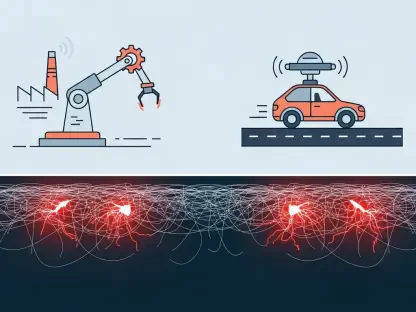Vladislav Zaimov is an esteemed telecommunications specialist, well-versed in enterprise telecommunications and risk management, particularly concerning vulnerable networks. With the Broadband Equity Access and Deployment (BEAD) program at the forefront of telecommunications discussions, Zaimov’s insights shed light on the program’s complexities that could affect connectivity, technology choices, and industry dynamics for years to come.
Can you explain why the BEAD program was placed on hold for a “rigorous review” back in March?
The decision to pause the BEAD program for a thorough evaluation stemmed from a need to ensure the objectives were being met effectively without compromising on efficiency or equity. Concerns had arisen regarding the original guidelines, which favored certain technological solutions and could inadvertently exclude viable alternatives. By placing the program on hold, it allowed for a reconsideration of the approach to foster more inclusive criteria that could better serve diverse community needs across the United States.
You mentioned states must pursue a tech-agnostic, cheapest-option approach to receive BEAD funding. What exactly does “tech agnostic” mean in this context?
“Tech agnostic” implies that the funding process will not preferentially lean toward any single type of technology, like fiber optics, over other possible solutions such as wireless or satellite services. The idea is that states are encouraged to opt for the most cost-efficient option that fulfills broadband needs, irrespective of the technology involved. This could democratize the approach, allowing different providers to compete based on merit and cost-effectiveness rather than a specified standard.
How will the tech-agnostic approach impact the bidding process for states?
This approach requires states to assess all potential bidders more holistically, evaluating a broader range of technological solutions to find what best serves their specific needs at the lowest cost. Since states must now adapt to this broader criteria, the competitive landscape may shift, offering smaller or alternative tech providers a stronger foothold in what may have been a fiber-dominated terrain. It could lead to more innovative solutions tailored to challenging environments, like rural areas, which might not have been served optimally under previous guidelines.
There seems to be concern over potential delays until 2026 for BEAD funding. What steps are being taken to ensure these delays are minimized?
Efforts to mitigate delays hinge on streamlining processes and fostering clear communication with state governments to expedite compliance with revised guidelines. Educating stakeholders on new requirements and ensuring technological solutions are evaluated fairly could help reduce confusion and speed up implementation. Additionally, keeping litigation risks at bay through transparent practices could help maintain pace, although some factors will require time to navigate properly.
Are further delays expected due to rebidding processes or possible litigation?
While rebidding processes inherently introduce some delays, transparency and stakeholder engagement will be key to curbing legal contentions that might prolong timelines. The real risk lies in how quickly states and providers can adjust to new rules and navigate potential disputes. It’s crucial for the overseeing bodies to offer substantial guidance and support throughout this transition phase to avoid unnecessary obstructions.
How do you respond to concerns that these changes might lead to rural Americans facing continued connectivity issues?
The concerns are valid, especially since rural communities have historically faced connectivity gaps. However, the tech-agnostic approach aims to address these issues by encouraging competitive and innovative bids that might offer cost-effective solutions tailored to unique geographical challenges. The success of these changes hinges on balancing the increased flexibility with sustained investment and effort to prioritize underserved regions.
What are the anticipated impacts of these changes on large ISPs compared to alternatives like Elon Musk’s Starlink?
Large ISPs may find the process more challenging as they now face significant competition from emerging technologies and smaller providers. They must ensure their cost structures and deployment capabilities are competitive under these new guidelines. Meanwhile, services like Starlink could benefit by offering rapid deployment options in areas without traditional infrastructure, providing immediate relief to underserved regions while larger ISPs adjust to the process.
Industry groups have had mixed reactions to your proposed changes to the BEAD program. How do you address concerns from groups such as the Fiber Broadband Association and USTelecom?
The mixed reactions underscore the need for ongoing dialogue and collaboration with industry stakeholders. It is crucial to demonstrate that the shift to tech-agnostic criteria is not about excluding fiber but about embracing a wider range of solutions that can adapt to specific community needs. Ensuring that fiber remains a viable option within a competitive framework is key to addressing concerns and reinforcing commitment to quality connectivity.
On the flip side, what are the main reasons the Wireless Internet Service Providers Association supports these changes?
The Wireless Internet Service Providers Association supports these changes due to the potential for increased flexibility in technological solutions. By moving away from a fiber-centric approach, they see an opportunity for wireless technologies to be recognized for their ability to provide cost-effective and rapid deployment in areas where infrastructure is lacking. The inclusive criteria could enable them to showcase their strengths and contribute positively to bridging connectivity gaps.
Regarding the recent investments in fiber manufacturing and job creation, how might a shift to a “tech-agnostic” approach impact these investments?
A shift to a tech-agnostic approach presents challenges in terms of maintaining investment momentum, especially with stakeholders who have committed heavily to fiber infrastructure. To counteract potential negative impacts, it’s important to reinforce the role of fiber within the broader technological landscape and advocate for continued investment as part of a diverse suite of solutions that includes wireless and satellite technologies.
What measures can be taken to safeguard these investments in the face of potential program adjustments?
Ensuring that funding allocations still account for established infrastructures while fostering innovation is crucial. Collaboration and policy advocacy can help secure fiber’s role, affirming its proven track record within a diverse range of technologies. Recognizing the legitimacy and necessity of fiber alongside other options can help maintain investment and job creation momentum.
Looking ahead, what steps are being taken to balance technological diversity with BEAD’s implementation objectives?
Balancing technological diversity requires a collaborative approach among federal, state, and local entities, along with industry stakeholders. Encouraging a transparent dialogue that articulates the role of each technology in a comprehensive connectivity strategy is key. By enhancing the evaluation criteria to reflect multiple success factors, the program can simultaneously encourage innovation while meeting the varied needs of American communities.
What role should state governments play in the BEAD process, and how much autonomy will they have in decision-making moving forward?
State governments should be empowered to tailor the program according to local needs while maintaining federal guidelines for consistency and equity. They will have significant autonomy in assessing viable technology options and making strategic decisions to address their unique connectivity requirements. However, federal oversight ensures alignment with nationwide objectives and helps mitigate disparities between states.
Lastly, can you provide any updates on the expected release of the new NOFO for BEAD, and what stakeholders can expect from it?
The anticipated release of the new NOFO will clarify updated program criteria, offering insights into the technological and strategic direction intended to foster greater inclusion and efficiency. Stakeholders can expect detailed guidelines on the bidding processes, adjustments in funding priorities, and anticipated timelines for deployment. These updates should help align stakeholder efforts and foster proactive engagement across the telecommunications landscape.









